In general, wines at the German discount chain are in the sub-£6, low cost price range. Now, in an effort to raise their game, a range of fine French wines, peaking with a Bordeaux at £26, will be on offer. That should be good news for consumers as in a £5 wine, the true cost of the wine within could be as little as 20 pence at the winery.
Lidl kindly sent me some samples ahead of the release date. Here's what I think of them.
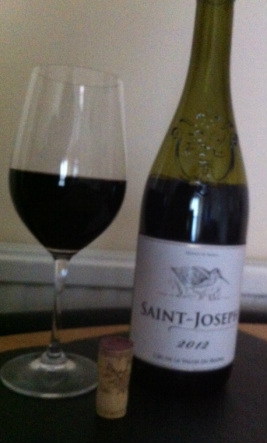
The colour is deep blood red and the nose is quite intense and deep, with almost meaty notes. Gushing acidity floods the mouth lightening the feel, but this is no lightweight wine. Medium bodied but with a depth of flavour that makes it feel fuller, and hefty tannins, it's not quite as elegantly full of violet notes as I'd hoped, but there's plenty for a Shiraz fans to chew on. The flavour description on the back suggests blackcurrant, raspberry, leather and liquorice. For me it's more blackberry than blackcurrant. The fruit is dark and with the spicy, meaty notes, it's almost not fruity enough.
This is a wine to enjoy with food, rather than to quaff a glass of to unwind. It's robust and would benefit from some protein on the side.
For the money, it's a decent wine, to be enjoyed now rather than in a few years time. Would I buy it? Unlikely. The finish is a little harsh, perhaps with a hint of rubber. Mr Purple Teeth didn't finish a glass.I'd probably spend a bit more to get a more elegant and violet noted Syrah. On the plus side, it was not too hight in alcohol, at just 12%, and with the intensity rendering it sippable rather than slurpable, it might be just the ticket if you're trying to cut back.
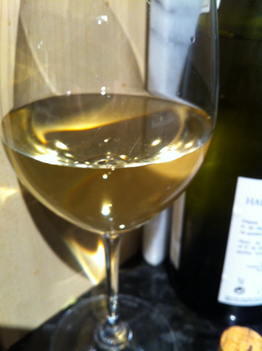
Next came a Burgundy (Bourgogne in French). The Hautes-Cotes-de-Beaune caught my eye for a number of reasons:
- I enjoy good Burgundy Chardonnay
- I've visited Beaune many years ago
- It's a reasonable price, £7.99
It couldn't quite deliver what I was looking for, but white Burgundies I've been sipping recently have been closer to double this price point, so perhaps that's a little unrealistic in terms of expectations.
It's a simple and uncomplicated white 100% Chardonnay, with a light and pleasant flavour, and a reasonably short finish.
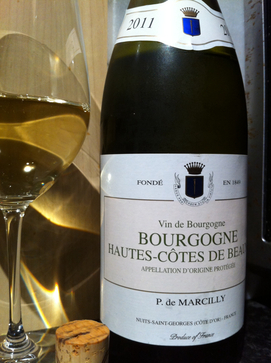 2011 Hautes Cotes de Beaune 12.5% abv £7.99
2011 Hautes Cotes de Beaune 12.5% abv £7.99 This is a wine for drinking in large glasses with friends, rather than studiously sipping. There's good acidity but it doesn't taste sharply acidic, medium body and some ripe fruit notes with a very subtle hint of vanilla and tropical fruits.
Subtlety isn't a byword for wine success at Chateau Purple Teeth. We tend to like concentration and aromatics rather than neutrality, but that's not everyone's style.
It would make a great base for Burgundy staple, the Kir. If you fancy a change, this works well with Violette as well as the traditional Creme de Cassis.
We describe this as a wine for people who don't really like wine. It's inoffensive, pleasant, soft, easy to drink and not too strong on any dimension.
Only you can decide if that's worth £8 of your cash. I'd probably choose something else, or save for a more expensive bottle.
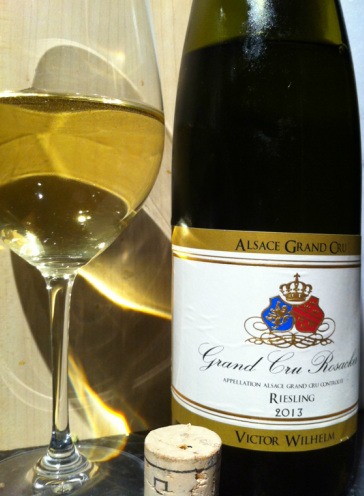 Grand Cru Riesling 2013 Rosacker 12% abv £5.99
Grand Cru Riesling 2013 Rosacker 12% abv £5.99 Riesling is a grape variety that's gone in and out of fashion over the years. Much maligned as a sweet German wine, it can produce sweet and dry wines of exceptional quality, and with price tags to match. It's also seen some success in Australia's Eden and Clare Valleys and in parts of the USA.
If you've never had Riesling before, you should expect a very acidic white - meaning it's really mouthwatering and refreshing - and flavours of lime. It's often said that Riesling has "petrol" and "mineral" notes of wet stones. To the uninitiated, these terms can be very unhelpful, as they don't sound particularly appealing. However, Riesling can be wonderful, and these strange flavour notes are what gives it a unique and intriguing character.
At £5.99 a bottle this may be the cheapest Grand Cru on the market. But what exactly does Grand Cru mean in Alsace? Among other things like vineyards at altitude between 200 and 300m, Grand Cru vineyards must produce lower yields (55 hectolitres per hectare), and wines must be from a single vineyard named on the bottle. Lower yields tend to mean better quality fruit, but higher prices as bulk production is less prominent. Rosacker, in the village of Hunawihr is just over 28 hectares and became a grand cru vineyard in 1983.
There's no back label here to give us any information, and this alone could lead to problems for Lidl shoppers. The point of sale information will doubtless inform customers that this is a dry wine, but I fear the traditional French labels on many of these wines may be a barrier for many cost-conscious wine shoppers.
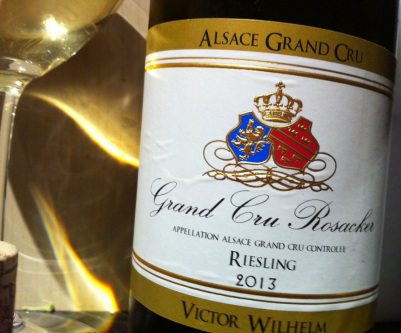
It's not as complex as some Alsace Rieslings, being predominantly citrus and green apple with those unmistakeable petrol/mineral notes.
Simplicity can be a good thing. At this price, you get an introduction to what a great wine dry Riesling can be, and it's affordable enough to serve with even your most mundane midweek meals.
If you enjoy a dry Riesling, you'll find this suitable for it's price point. If you've never tried it before, but fancy the sound of something that makes your mouth water as much as yellow & green Starbursts, it's a low risk starting point.
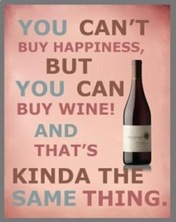
If you're in your local Lidl branch later in the week and pop a bottle in your trolley, do let me know what you think of it. My top pick goes to the bargain basement Sauternes at £6..99 with the £5.99 Riesling a close second. They're at the simple end of their types, but at these prices, who cares? I look forward to hearing about your Lidl favourites.
Cheers!
FOONOTE!
I didn't finish the Riesling and put it back in the fridge with just the cork pushed back in. Two days later I went back to it (today). It was still fresh and vibrant and paired brilliantly with my tomato/chilli pasta with chorizo, prawns and peas. Riesling is the food wine to end all food wines in my view - goes with lots of hard to pair things. For £5.99, you can't fail with this one for your mid week summers. Thank you Lidl
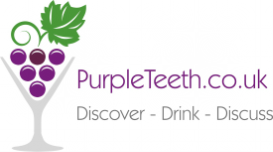
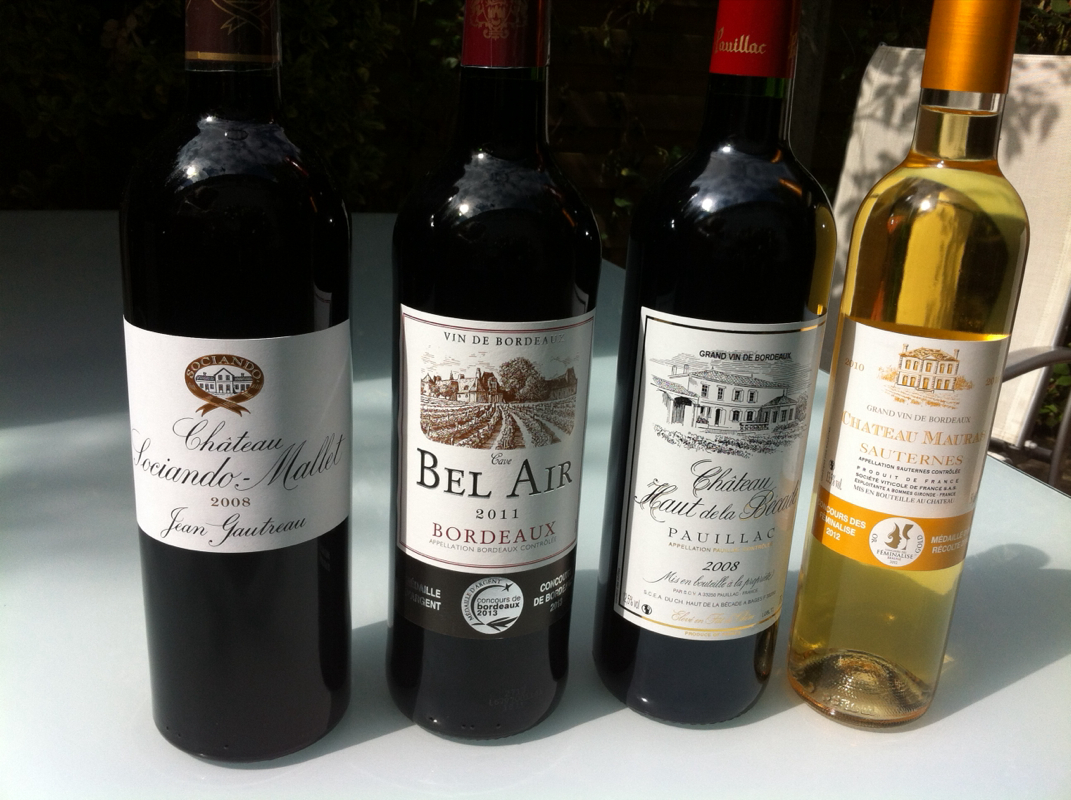

 RSS Feed
RSS Feed
